![]()
![]()
![]()
Use LEFT and RIGHT arrow keys to navigate between flashcards;
Use UP and DOWN arrow keys to flip the card;
H to show hint;
A reads text to speech;
25 Cards in this Set
- Front
- Back
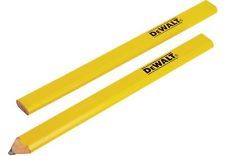
|
Pencil - used for marking out on wood - only use if sharp, or (if blunt) the accuracy doesn't matter - special woodworking pencils have a wide lead, used edge-on, to reduce having to keep sharpening them |
|
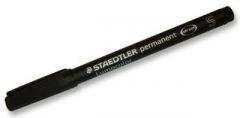
|
OHP / permanent pen - preferably fine point - used for marking out smooth surfaces, like "plastics" (= polymers) |
|

|
Scriber - like a metal pencil - used for scratching accurate marking out lines on metal - "tempered" very hard (therefore brittle) = do not hammer it (it could shatter) |
|
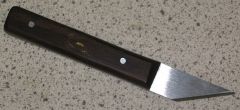
|
Marking knife - for precision marking out on wood - blade ground & sharpened on one side only, so as to get right up to the rule |
|
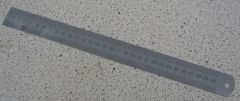
|
Steel Rule - NB: not "ruler" - markings etched or engraved into the surface (tiny grooves) for accuracy - measures from the flat end - dividers, etc., can be set by feeling their point click into the engraved lines - made of stainless steel or "spring steel" (tool steel with a spring temper) - some have a "D" end with a hole for hanging it up - can be used to check how straight an edge is |
|
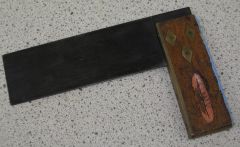
|
Try Square (for wood) - used to check how "square" (at right angles) a corner is - wooden "stock" (body) - tempered "blade" (so it's a bit springy and doesn't take a permanent bend easily) - usually has a brass plate along the inner face of the stock, to reduce wear |
|

|
Engineers' Try Square - for metal & plastics - used to check how "square" (at right angles) a corner is - smaller than woodworkers' - all metal construction - has a small slot where the blade joins the stock, to allow for small burrs so they don't cause a false reading |
|
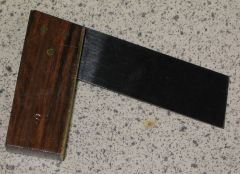
|
Dovetail square - small (typically about 75mm long or less) - the blade is at the correct angle for marking out dovetail joints - usually has a brass plate along the inner face of the stock, to reduce wear |
|
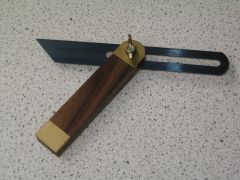
|
Sliding Bevel - the blade can be adjusted to any angle, then clamped - the brass end plates at the bottom of the stock are because, on its own, the wooden stock would be likely to snap. The brass is riveted through the wood - the brass plates at the top are to reduce wear where the clamp nut operates - the slot in the blade allows acute and obtuse angles, and different widths of wood to be gauged. |
|
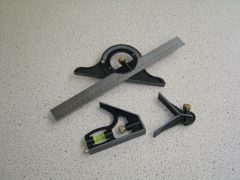
|
Combination Square - an interchangeable collection of (usually 3) stocks to fit a slotted rule - right angle * mitre (45degree) stock; may have spirit level built in - centre finder stock (vee shaped) - protractor stock (for any angle - stocks are made of cast steel (rather brittle) |
|
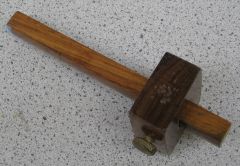
|
Marking gauge - for marking wood - single "spike" (point) - works by scratching a line parallel to the edge - it may be diverted away from where you want it by its following the grain, rather than staying parallel, so a series of light sweeps is better than one firm one |
|

|
Mortice gauge - use (on wood) to mark out mortice & tenon joints - two points, so the chisel width can be set identically on both parts - the chisel width is set/locked by the wing at the back end - the distance from the edge /side is set/locked by the screw in the stock - usually made of mahogany (long lasting), often with brass strips on the face of the stock to reduce wear
|
|
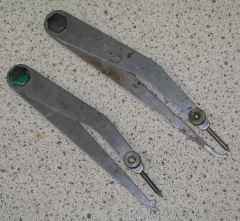
|
"Odd leg" / "Jenny" / "Odd Leg Jenny" calipers - used for marking lines on metal parallel to an edge - some have a stepped leg - some have a curve ended leg - most (not all) have an adjustable / replaceable scriber point |
|
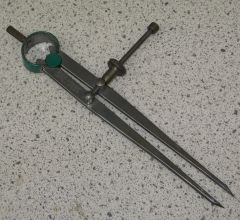
|
Dividers - used for transferring measurements from rule to workpiece - set by placing one point into a rule line (eg: 10mm), then adjusting the other till it "feels" into the appropriate space (so for a 50mm measurement, starting 10 it will slot into the line at 60) - also used for drawing radii (circles, etc.) |
|
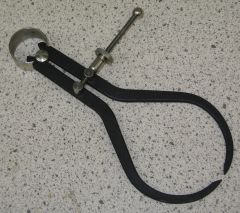
|
Outside calipers - used for taking external measurements - adjusted for a "strong magnetic feel" - it is then measured by placing one leg at the end of the rule and looking where the other comes. - they may have a stiff joint, or a "springbow" hinge (bobbin, screw and adjustment nut, as in the picture) |
|
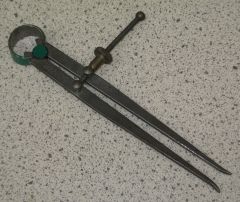
|
Inside calipers - for measuring internal dimensions - construction similar to outside calipers but end of legs curve outwards - measurements transferred to outside calipers, then to a rule (for greater accuracy than just looking at where you think the ends come on the rule) |
|
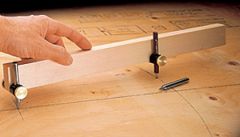
|
Beam compass - for drawing large radii - can also be made with a strip of wood, a nail, and a hole for a pencil to poke through - also known as trammels |
|
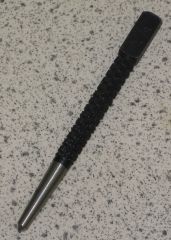
|
Centre Punch - the tip angle is 90 degrees - for making a dent at the centre of where a hole will be, so the drill starts in the right place - a very firm hammer blow is needed - always use a solid metal block (eg: anvil, back of vice, or cutting block) under the workpiece, to maximise the dent with minimal effort. |
|
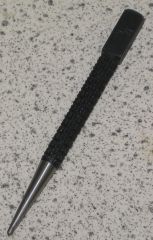
|
Dot Punch - tip angle is 60 degrees - used for marking a line of dots to show where marking out should be (if it's likely to be scrubbed off while you're working) - only light taps with a hammer are necessary. - when you've finished you should have a line of half dots ( ! ) |
|

|
Automatic Dot Punch - for rapidly, one-handedly, making a line of dot punch marks (see "Dot Punch" for purpose) - spring-loaded impact mechanism, so you don't need to use a hammer.
|
|
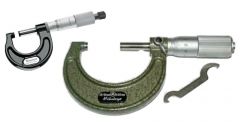
|
Micrometer - it is NOT a fancy G cramp ! - for measuring outside dimensions - to 0.001" (thousandth of an inch) or 0.01mm (metric version) - 0.01mm = ~0.0004" (4 tenths of a "thou") - inches (") to mm = " x 25.4 -it is closed (gently) onto the work to be measured, using the ratchet at the end of the "thimble", so it puts the same pressure onto the work every time - measurement range is 0-1" (25mm) whatever size the work is; larger ones starting with a bigger gap (so a 6" one will have a 6" gap, then measures the 1" range) - one full turn is 0.5mm or 0.025 inch (depending whether metric or imperial scale)
|
|

|
Vernier Calipers - for measuring inside, outside, and depth - measures over a range of (usually) 0 to 6" (0-150mm) - bigger ones are available, but heavier - typically accurate to 0.01" (0.254mm) - it has a spring loaded "brake" to hold it still between measuring the work and reading the scale. - the scale is a bit tricky to read until you've learned it, then it's down to how good your eyesight is. - mostly superseded by dial and digital calipers |
|

|
Dial calipers - for measuring inside, outside, and depth - measures over a range of (usually) 0 to 6" (0-150mm) - typically accurate to 0.004" (0.1mm) - dial is easier to read than vernier scale type |
|
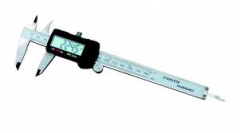
|
Digital calipers - for measuring inside, outside, and depth - measures over a range of (usually) 0 to 6" (0-150mm) - typically accurate to 0.001" (0.0254mm) - dial is easier to read than vernier or dial type |
|
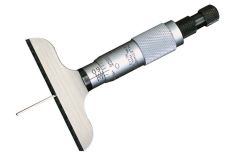
|
Depth Micrometer - for measuring the depth of holes or steps - same measuring range as outside (= ordinary) micrometers |

